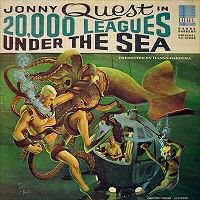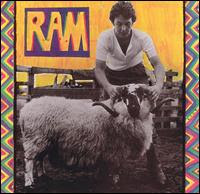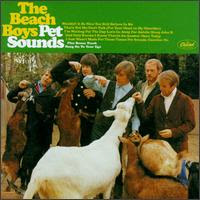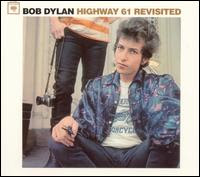Just to freak you out I thought I'd delve into another passion of mine for my next post: vintage comic books, particularly those of the E.C. variety. I just thought that the blog needed a little "shaking up".
Mad Comics, 1-23
If you’re under 40 years of age you may not be aware that Mad magazine, that veritable anti-establishment humor publication that was so prevalent in the 60’s and 70’s, began life as a $.10 comic book way back in 1952.
Founded by comic legend Harvey Kurtzman as a way to earn extra money (they paid editors “by the book” back then), the first Mad issue hit the stands in October and featured four stories, each spoofing a different E.C. book. E.C. (or, Entertaining Comics) was, at the time, the undisputed leader of Horror, Suspense, Science Fiction and War comics, due in no small part by the amazing array of talented artists and writers William Gaines was lucky enough to employ at the time. There was Will Elder, Jack Davis, Harvey Kurtzman, John Severin (remember Cracked?), Al Feldstein, Wally Wood and even a very young unknown by the name of Frank Frazetta.
With Mad, Kurtzman introduced a whole host of innovations still copied to this day. He parodied many aspects of of life and pop culture including movies, television, magazines (and their ads), in addition to many other not so easy targets often thought of as “sacred cows”. As a matter of fact, the one parody of Superman (entitled “Superduperman” and wonderfully drawn by Wally Wood), the most sacred of all super hero sacred cows, was the story that launched Mad into the stratosphere. 
The publishing of “Doctor” Fredrick Wertham’s book in 1953, “The Seduction Of The Innocent”, put a considerable damper on E.C.’s, and Mad’s, success. It was a scathing indictment of virtually all comic books at the time but horror and crime comics were his main targets. He saw them as having a true and real damaging effect on the youth of the 50’s, going so far as to cite the books roles in many case trials involving crimes, injuries, murders and…of course…juvenile suicides
On April 21st, 1954, during the height of McCarthyism, William Gaines appeared before the Subcommittee to Investigate Juvenile Delinquency of the Committee on the Judiciary. 
Gaines did in fact speak in defense of his comics. The following is a brief excerpt:
“The truth is that delinquency is the product of the real environment in which the child lives and not of the fiction he reads. The problems are economic and social and they are complex. Our people need understanding; they need to have affection, decent homes, decent food. Our American children are for the most part normal children. They are bright children, but those who want to prohibit comic magazines seem to see dirty, sneaky, perverted monsters who use comic books as a blueprint for action”
Anyway, the main thing that came out of these hearings was the Comics Code Authority stamp of approval, which Gaines refused to abide by, which labeled him a publishing leper and eventually led to the destruction of the classic line up of E.C. books. Mad, in an effort to get around the CCA rules and regulations turned itself into a magazine and the rest is history.
which Gaines refused to abide by, which labeled him a publishing leper and eventually led to the destruction of the classic line up of E.C. books. Mad, in an effort to get around the CCA rules and regulations turned itself into a magazine and the rest is history.
Even though Mad magazine was excellent under the leadership of Al Feldstein (who can argue with Al's success at finding and nurturing such talent as, Al Jaffe, Don Martin, Sergio Aragones, Prohias, Angelo Torres, Frank Kelly Freas, Norman Mingo, Mort Drucker etc?), there was something about those first 23 issues that was special. Something a little darker, a little more subversive.
Many of the underground cartoonists of the late 1960's and 70's will no doubt agree with me. Legends of the genre such as Rick Griffin, Robert Crumb and Gilbert Shelton have cited those early issues with Kurtzman at the helm a MAJOR influence.
No doubt.
5 hours ago






























































4 comments:
OK, now yer talkin' Unc. You may need a whole new separate blog for your Comic Book jones. I'll read it!
I truly believe that American comic book artists like the ones you mention are only now getting their due. In the 50s and 60s the public at large didn't consider what they did "art." I disagree vehemently. If Rembrandt, Durer or Ingres had lived in this era they would have been comic book artists. And, if you look closely at the work of Wood, Davis, Orlando and company you'll see what I mean.
Thanks for the post!
Thanks Philbert. Alas, I think you (and maybe Nick) might be the only ones in the entire viewership that are as geeky as I about comic art.
Poor buggers.
I'm afraid I never had a great affinity for comics. Though I learned to a reading habit by consuming loads Mickey Mouse/Donald Duck comics. But superheroes and stuff like that, meh.
I have (had?) a reproduction of the first Mad magazine, and found it entirely unappealing. Interesting, but not up my street. Whereas I loved Mad in the '70s and '80s.
Anyway, having said all that, I really appreciate your post on the nature of early Mad; I've learned something new.
Hey Unk E.,
How about a higher-res version of Superduperman so we can see more detail? And thanks for the trip down memory lane.
Post a Comment